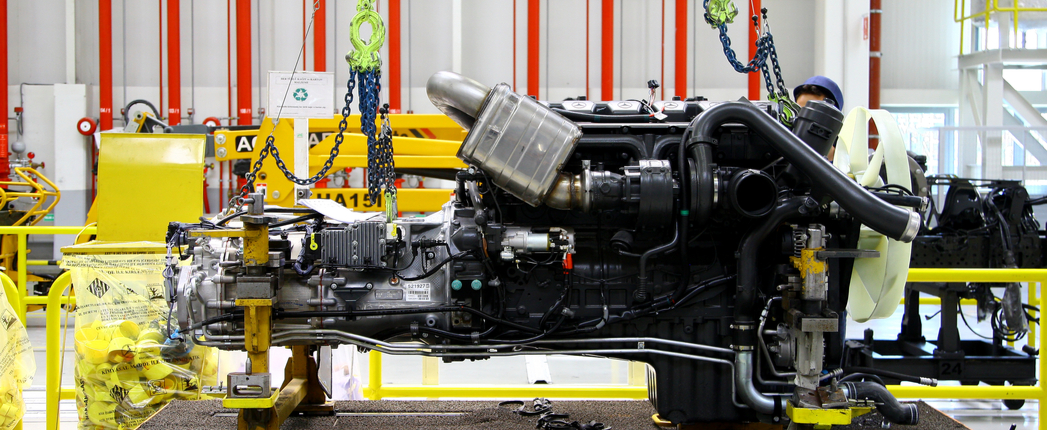
The European Automobile Manufacturers Association published this month an update to its ACEA Engine Oil Sequences for heavy-duty engines, providing industry standards for oils that last longer, are more robust and that accommodate the latest engine designs
This update did not directly address fuel economy, passing for now on reducing viscosity thresholds.
“The focus on these improvements have been on durability, robustness and ensuring oil performance during the full operation,” ACEA Heavy-duty Diesel Chairman Mattias Berger said in an email exchange.
The update to ACEA’s heavy-duty oil sequences comes more than three years later than originally intended. They were part of an update that initially was to cover oils for light- and heavy-duty engines and that was scheduled to be adopted before the end of 2018. Progress was slowed for multiple reasons, including the coronavirus pandemic. The light-duty sequences were adopted a year ago, but the organization pushed the heavy-duty update back to now so it could include the OM 471 test piston deposit test, which replaces the OM 501 test.
The 2022 sequences add two new categories, E8 and ACEA E11, replacing E6 and E9, which have been declared obsolete. E8 is meant for engines that meet Euro VI and earlier emissions requirements, that are equipped with particulate filters – perhaps in combination with other emissions control technologies such selective catalytic reduction and exhaust gas recirculation – and that are used under very severe conditions such as significantly extended drain intervals.
E11 is also for Euro VI engines using particulate filters and other control technologies but has a slightly lower bar than E8 for operating conditions and drain intervals. E11 can stand up to severe conditions, as opposed to very severe, and can accommodate extended drain intervals but not significantly extended.
The E6 category was for oils with low levels of sulfated ash, phosphorus and sulfur used in engines running on ultra high-performance diesel, while E11 was for products with medium SAPS levels and super high-performance diesel.
The other two existing categories, E4 and E7, remain and were updated. Both are intended for older engines – complying with Euro V or earlier emissions standards – that may be equipped with SCR or EGR but not particulate filters. Otherwise E4 matches E8 for severity of operating conditions and drain intervals, while E7 again reaches a slightly lower bar.
The update raises anti-oxidation performance and piston deposit control for all four categories. In E8 and E4, pass levels for the new OM 471 test are more severe than those set previously for the OM 501.
“This OM 471 adoption entails a significant performance severity increase to cover the needs for extended oil drain intervals,” Paul van de Heijning, co-chairman of Industry Liason Committee for the Technical Association of the European Lubricants Industry. “The new OM 471 engine tests sets a new industry standard in terms of engine test severity and test duration of one month. This increased piston cleanliness performance is needed to cope with the significantly higher operating temperatures of the latest Euro VI HD engines using SCR systems, driven by Euro VI [nitrous oxide] emission legislation in combination with extended oil drain intervals.”
The OM 471 is too severe of a test for E7 oils, so in that category ACEA replaced the OM 501 test with the Cat 1N test for piston deposit control. The organization wanted to align E11 with the American Petroleum Institute’s API CK-4 specification, to there it adopted the Cat C13. Both Cat tests were developed by Caterpillar in North America. Alignment with other standards was also a theme of ACEA’s update, van de Heijning said, as adoption of tests and limits increased commonality between E7 and API CI-4 and between E8 and Mercedes’ MB 228.51.
Adoption of the Mack T-13 test into E8 and E11 achieves a significant boost in oxidation control, and inclusion of the Caterpillar Oil Aeration Test does the same for aeration control, Berger said.
ACEA permitted oil marketers to promote products as meeting the updated sequences beginning May 1. They may continue to promote products as meeting the previous heavy-duty sequences – ACEA 2016 – until the same date next year.
Berger said ACEA and its partners have already begun working on the next updates and will probably define the scope of that work later this year. It may be there that ACEA adds criteria for improvement of fuel economy.
“Longer term we are of course looking into specifications focusing on fuel economy by lowering viscosity below today’s high-temperature high-shear [viscosity] minimum of 3.5 centiPoise, similar to the API FA-4 approach,” he said, referring to API’s companion spec for CK-4. At present, he noted, some ACEA member engine manufacturers include fuel economy requirements in their own genuine oil standards.